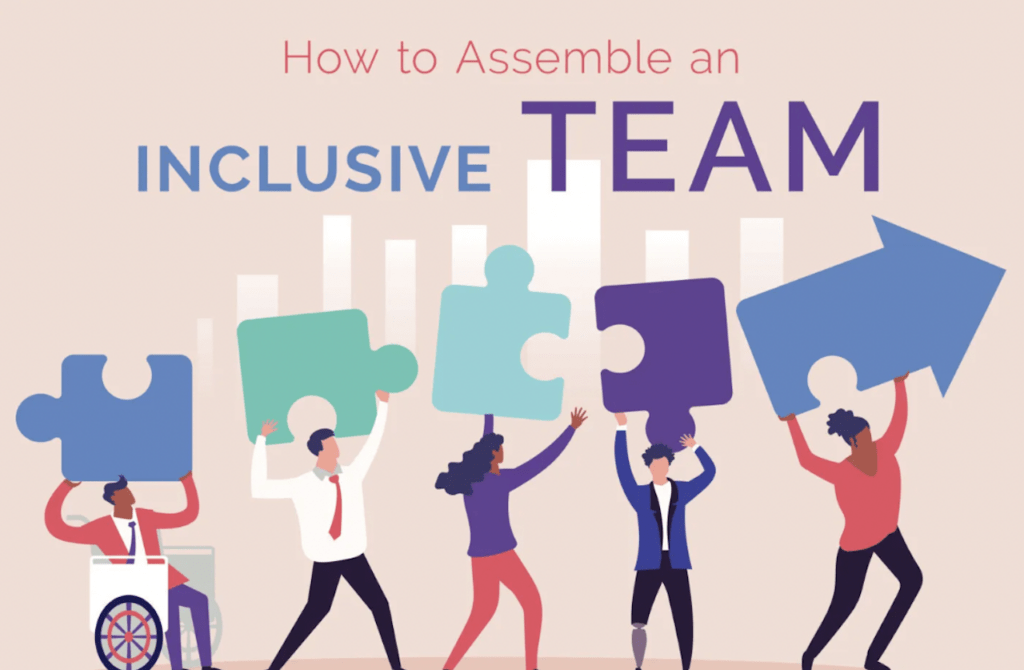
Business aviation recruiter Jennifer Pickerel shares advice on how to build an inclusive team in the NBAA’s Business Aviation Insider.
An inclusive culture is necessary for the business aviation industry to remain at the forefront of innovation, so a new appendix in NBAA’s Management Guide focuses on how business aircraft organizations can implement diversity, equity and inclusion (DE&I). The appendix provides tips for managers to promote diversity and build an inclusive team, which involves several key steps to ensure that all team members feel valued and positive about their contributions.
Promote Open Communication
The first critical step to creating an inclusive team is open communication, and not just the stereotypical “open door” policy.
According to personnel experts, an open-door policy is actually the opposite of what leaders should do.
Instead, organizations should establish communication structures that work for all parties. An “open door” policy puts the onus on the employee to come to the manager with concerns about potential biases.
“We’re in a fast-paced industry, and so are the industries that power business aviation – we can often lose sight of the basics,” said Tracie Carwile, vice president of global sales and inclusion at GGT Worldwise, a provider of secure ground transportation. “Organizations should spend the time to develop easy communications processes that work for their employees and managers alike, and know it can take several iterations to get it right for your team.”
Diversity starts with inclusion, which requires an organization to uncover what unconscious biases or even overt biases exist in their organization.
“We sell our organizations to our customers based on our great teams, so we need to start trusting our people,” Carwile said. “They often have the answers to removing bias and increasing diversity of thought in their immediate workspaces, but do we believe them? If you’re going to modernize and retain your high-performing talent, we, as leaders, must create psychologically safe environments fostering a culture that listens to their people.”
Remove Bias in Recruiting and Interviewing
Another important step toward creating an inclusive team is to interact with diverse groups of people well before you need to recruit new employees.
“What pool of potential employees are you drawing from? We tend to draw from our personal networks which, without intentional effort, can lead to a homogeneous pool,” said Jennifer Pickerel, a vice president at Aviation Personnel International. If leaders don’t intentionally reach into other groups, they’re likely to recruit from their own alumni pool or other common groups of people, added Pickerel.
The best way to root out bias in recruiting and interviewing is to be consistent.
— Keep your interview style consistent, and don’t deviate based on how you personally feel about a candidate.
— Establish objective parameters for measuring job candidates, including individuals eligible for promotion.
— Use double-blind processes, removing names from resumes and conducting phone interviews before meeting candidates in person or conducting virtual interviews.
For example, a director of aviation felt a pilot wasn’t ready for an upgrade. The pilot had plenty of experience and performed well, but the director just “felt” it wasn’t time. Allowing subjective feelings to determine whether an individual is offered a job or a promotion can result in bias creeping into the process and making it inequitable.
“It’s human nature to bind to commonalities, but it’s the responsibility of the interviewer not to engage in these sorts of behaviors,” said Pickerel.
— Have an outside party – whether a third-party entity or someone in your organization who is not directly involved in recruiting – review your recruiting and interviewing processes.
Evaluate Your Organization’s Equity
Establishing and maintaining equity is essential to building an inclusive team. When we talk about equity, people tend to think first about compensation.
“We need to start there and hold entities accountable by continuing to request pay transparency. The entry point to being an equitable organization is to compensate equitably – that’s the absolute lowest bar,” said Carwile.
Develop and stand behind a pay equity statement, and keep in mind that equity is not about being equal or fair. In its simplest definition, “equity means making access easier, period. It is not about what opportunities you think someone does or does not deserve,” declared Carwile.
Consider your organization’s benefits package, professional standards for appearance and other factors. Do you allow parental leave for both parties of a same-sex marriage or for parents who are adopting? Do your family leave policies acknowledge not only child caretaker roles but also parent caretaker roles?
“Equity is the transitional road to justice. Until systems can be ‘corrected,’ we must establish equity within existing structures,” said Pickerel.
“Transparency is really the key,” she added. “If you’re truly committed to equity, it’s represented in your processes and procedures, including your benefits and personnel structure. Are you transparent in your job descriptions and expectations? Are opportunities for advancement clearly defined and available to all personnel?”
In a simple and common aviation example, an aviation manager feels a pilot isn’t ready to upgrade, and the manager prefers not to document upgrade requirements in an effort to preserve subjectivity. The inequity in this practice lies in allowing subjective feelings to solely or primarily determine an individual’s opportunity for advancement; the process is rife with opportunity for bias.
Also, remove unnecessary or outdated barriers to entry. For example, four-year-degrees are no longer required by some airlines. Does your organization have similar barriers to hiring or advancement that create inequities?
To read the full article, visit NBAA.org.
